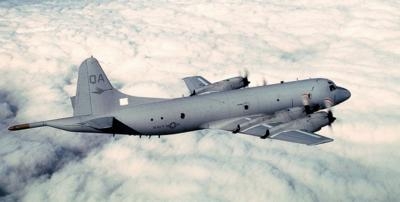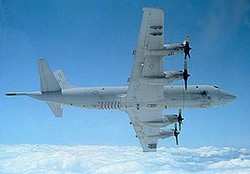P-8 Poseidon To Take Over P-3's Mission
The "Tridents" of Patrol Squadron (VP) 26 began their last deployment with the P-3C Orion aircraft with a send-off of their first two planes out of Naval Air Station, Jacksonville, Jan. 22.

The historic occasion was attended by senior leadership, family and friends of VP-26 Sailors and members of the Jacksonville community. "This is a historic deployment for you," said Rear Adm. Matthew J. Carter, commander of Patrol and Reconnaissance Group. "You are the last operational P-3 squadron on the East Coast. Once you go, we are a P-8 only force. That does not diminish anything you do with this aircraft. America has given us the best, and this aircraft is still a very capable airplane."
Carter knows firsthand how much the P-3 community has contributed to the success of the Navy's mission. He served as both executive officer and commanding officer of VP-26, and he told the Sailors just how special it is to wear the Trident colors.
"We have been flying this aircraft for 50 years," said Carter. "The whole squadron, from the admin department, the maintainers and the aircrew has continued to go out and do great things, and I know you are going to go out on this deployment and do great."
Preparing the squadron for a deployment presents its challenges which include everything from packing up parts and equipment, preparing junior Sailors for their first deployment and making sure Sailors are up to date with their training.
"Seeing that there are not many P-3s around and this being the last P-3 deployment for the East Coast," said VP-26 Command Master Chief James B. Daniels. "Getting parts has been a big issue. Also, since most of our preparations have been during the holidays, we needed to work hard to make sure our Sailors were trained on what is expected of them and they were ready for deployment, but the squadron has met its challenges and now is ready to go."
The support from family and friends is an integral part of the success of the Sailors. "My family is so supportive and so much a part of my life," said Aviation Electronics Technician 2nd Class David Heder. "Having to leave them is the hardest part of deployments."

Heder's wife and two children were there to show their support. Heder said that he was a little nervous and sad to leave his family. "I'm looking forward to this as much as I can," said Heder. "I miss my family when I'm away, but I have a job to do and I enjoy it because I learn something new every day, and I'm challenged every day."
Heder said this is his second history-making deployment since he has been in the Navy. "I actually helped introduce the P-8 while I served at VP-30," said Heder. "It's cool to be able to say that I was a part of the P-8 coming in and now a part of the P-3 going out in Jacksonville."
Retired Chief William W. Stewart, from the aviation structural mechanic community and a Jacksonville resident, was present to witness this historic day. Stewart served 30 years in the Navy and was factory-trained on the P-3 in 1962. "I was assigned to VP-9 as an airframes chief after training with Lockheed on the P-3s and went on their first deployment with the aircraft in November 1964," said Stewart. "It's kind of sad to see the P-3 go, but it's an evolution. It's a new age; we have cell phones, wide-screen TVs and now the P-8s."
VP-26 became the Navy's first operational P-3B squadron in January 1966, when the squadron received the first production of the P-3B while stationed at Naval Air Station, Brunswick, Maine. "I am so proud of all the Sailors who have worked so hard to keep these aircraft flying for so many years," said Cmdr. Gregory Smith, VP-26 commanding officer.
(Images from file)
 ANN's Daily Aero-Term (05.07.25): Terminal Radar Service Area
ANN's Daily Aero-Term (05.07.25): Terminal Radar Service Area ANN's Daily Aero-Linx (05.07.25)
ANN's Daily Aero-Linx (05.07.25) Classic Aero-TV: Anousheh Ansari -- The Woman Behind The Prize
Classic Aero-TV: Anousheh Ansari -- The Woman Behind The Prize NTSB Prelim: Bell 206B
NTSB Prelim: Bell 206B Airborne-NextGen 05.06.25: AF Uncrewed Fighters, Drones v Planes, Joby Crew Test
Airborne-NextGen 05.06.25: AF Uncrewed Fighters, Drones v Planes, Joby Crew Test




